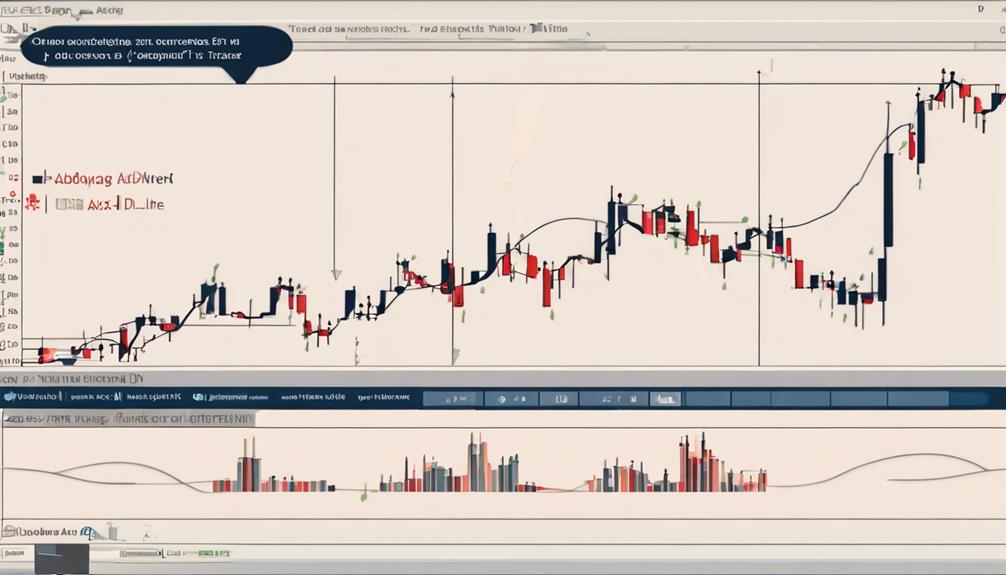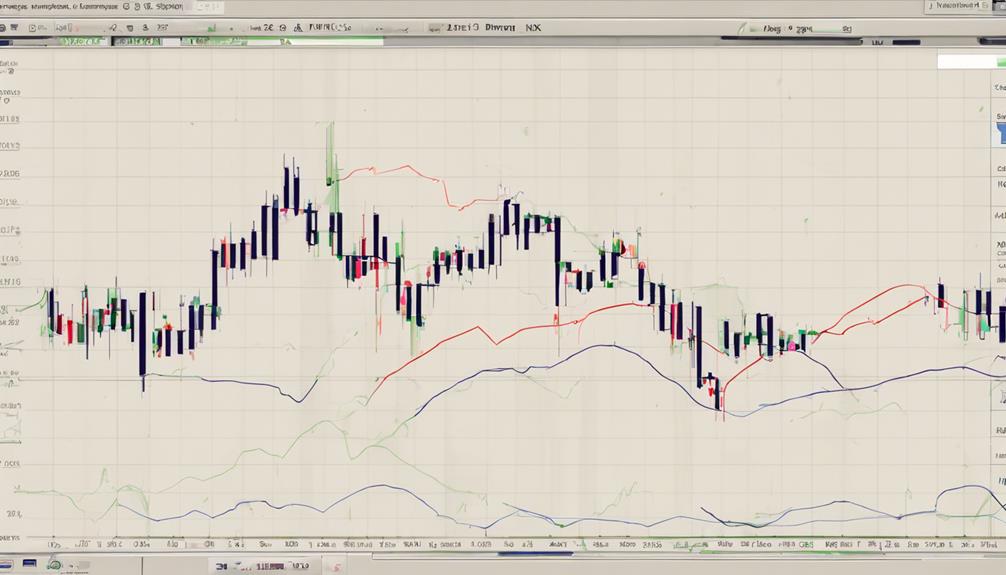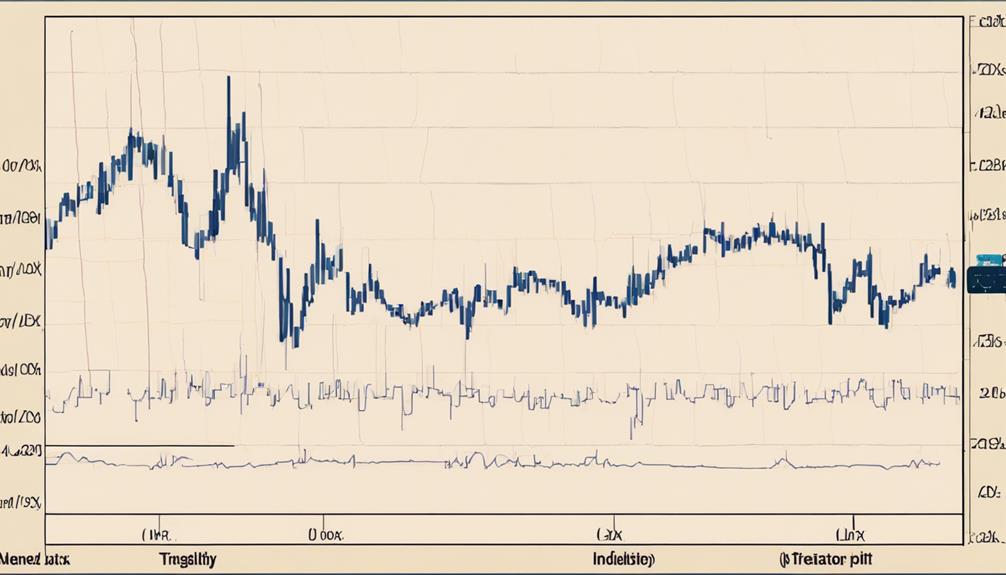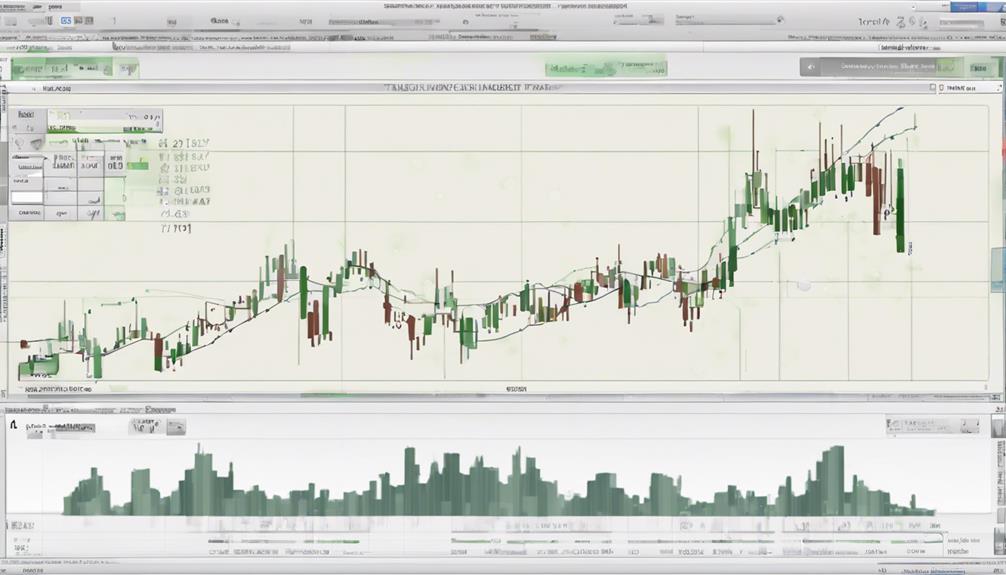The Average Directional Index (ADX) serves as a valuable tool in technical analysis for traders seeking to gauge trend strength and potential reversals in financial markets. By calculating the values of the positive directional indicator (+DI), negative directional indicator (-DI), and true range (TR), the ADX offers insights into market trends.
Understanding the method to decipher the ADX involves a series of calculations and interpretations that can assist traders in making informed decisions. However, the intricacies of these calculations and their practical implications in trading strategies make the ADX an intriguing subject worth exploring further.
Understanding Average Directional Index (ADX) Calculation
In delving into the intricacies of Average Directional Index (ADX) calculation, one must first grasp the fundamental components involving the determination of positive directional movement (+DM) and negative directional movement (-DM) derived from price fluctuations. The process begins with calculating the True Range (TR), which encapsulates the highest of the current high minus the current low, the absolute value of the current high minus the previous close, or the absolute value of the current low minus the previous close.
Smooth 14-period exponential moving averages (EMAs) of +DM, -DM, and TR are utilized to compute the positive directional indicator (+DI), negative directional indicator (-DI), and the directional movement index (DMI). The ADX formula entails taking the absolute value of the difference between +DI and -DI, dividing it by the sum of +DI and -DI, and then computing a 14-period EMA of this value to derive the ADX. This calculation, based on price range expansion and smoothing techniques, offers valuable insights into trend strength and direction.
Interpreting Average Directional Index (ADX) Signals

Moving from the intricacies of ADX calculation, the interpretation of Average Directional Index (ADX) signals provides valuable insights into trend strength and direction in financial markets.
- ADX signals trend strength, with levels below 20 indicating weak trends and levels between 25-50 representing strong trends.
- Crossovers between the positive directional indicator (+DI) and negative directional indicator (-DI) can signal bullish or bearish trends.
- ADX crossing above 25 suggests increasing trend strength, while crossing below 25 indicates weakening trends.
Interpreting ADX signals involves looking out for crossovers and divergence patterns that can offer indications of potential trend reversals. By paying attention to these signals, traders can better assess the momentum and strength of a trend, aiding them in making informed decisions regarding market positions. Understanding the nuances of ADX interpretation can significantly enhance one's ability to navigate the complexities of financial markets with greater precision and confidence.
Comparing ADX With Other Technical Indicators

When juxtaposed with various technical indicators, the Average Directional Index (ADX) stands out for its emphasis on trend strength rather than directional bias. Unlike many indicators that focus on determining market direction, ADX is specifically designed to measure the strength of a trend.
Comparing ADX with other technical indicators like the Relative Strength Index (RSI) can provide traders with a more comprehensive analysis of the market conditions. While RSI helps identify overbought or oversold conditions, ADX complements this by indicating the strength of a trend.
Additionally, ADX crossovers and Aroon indicators offer different insights into trend changes, allowing traders to make more informed decisions. Understanding how ADX differs from other technical indicators is crucial for traders looking to enhance their trend analysis accuracy.
Assessing the Reliability of Average Directional Index (ADX)

Assessing the reliability of the Average Directional Index (ADX) involves examining its consistency in accurately indicating trend strength over time. To delve deeper into this assessment, consider the following points:
- ADX reliability increases with higher values, which typically suggest more significant trends in the market.
- Traders often rely on ADX readings above 25 as more dependable for assessing trends due to their increased reliability.
- Long-term observation of ADX trends is essential to evaluate its reliability across various market conditions and time frames.
Implementing Average Directional Index (ADX) in Trading

To effectively apply the Average Directional Index (ADX) in trading, traders must understand its calculation method and interpret the values to gauge trend strength and potential market entry or exit points. ADX is derived by averaging the positive and negative directional indicators (+DI and -DI). Traders utilize ADX to assess the strength of a trend, with values above 25 indicating increasing strength and values below 20 suggesting weakening trends.
Additionally, crossovers between the +DI and -DI lines can indicate shifts in trend direction, providing traders with potential entry and exit signals. Incorporating ADX with other technical indicators, such as the directional movement index (DMI), can enhance decision-making in trading strategies and improve risk management. By analyzing ADX values and trend direction, traders can make informed decisions based on trend strength and potential market movements, optimizing their trading approach for better outcomes.
What are the Benefits of Understanding the Average Directional Index Method?
Understanding the advanced directional index importance can lead to improved trading decisions. The Average Directional Index (ADX) method helps traders identify the strength of a trend, making it easier to determine the best time to enter or exit the market. This can result in higher profits and reduced risk.
Frequently Asked Questions
How Do You Interpret Directional Movement Index?
Interpreting the Directional Movement Index involves analyzing the relationship between +DI and -DI to determine market direction and potential trend changes. Understanding these components is crucial for gauging trend strength and momentum accurately.
How Do You Read ADX and DI InDIcator?
When reading ADX and DI indicators, focus on +DI's bullish movement, -DI's bearish movement, and crossovers for trend changes. ADX values signal trend strength, aiding in informed trading decisions. Combining ADX and DI interpretations enhances market trend analysis.
How Is the Directional Indicator Calculated?
The directional indicator is computed by subtracting the previous high from the current high for +DM and subtracting the current low from the previous low for -DM. These calculations ascertain price movement direction and intensity in a specified period.
Which Indicator Works Best With Adx?
When working with the Average Directional Index (ADX), the Relative Strength Index (RSI) is a powerful complementary tool. RSI aids in pinpointing overbought and oversold conditions, enhancing ADX's ability to confirm trend strength and potential reversals in the market.
Conclusion
In conclusion, the method to decipher the Average Directional Index provides traders with valuable insights into trend strength and direction. By utilizing the ADX, +DI, and -DI calculations, traders can make informed decisions based on trend signals.
However, it is essential to remember that technical indicators like the ADX should be used in conjunction with other tools for comprehensive analysis. Remember, relying solely on one indicator may lead to oversights and misguided trading decisions.
